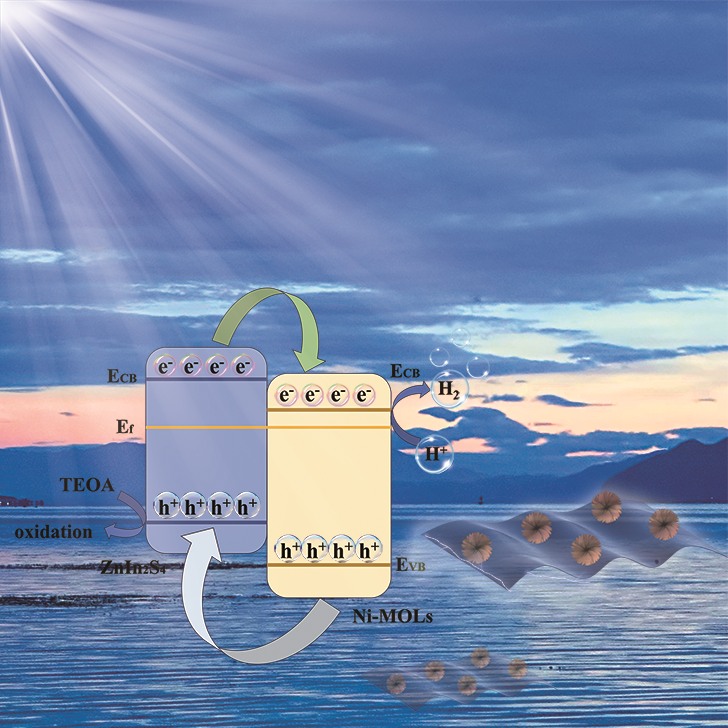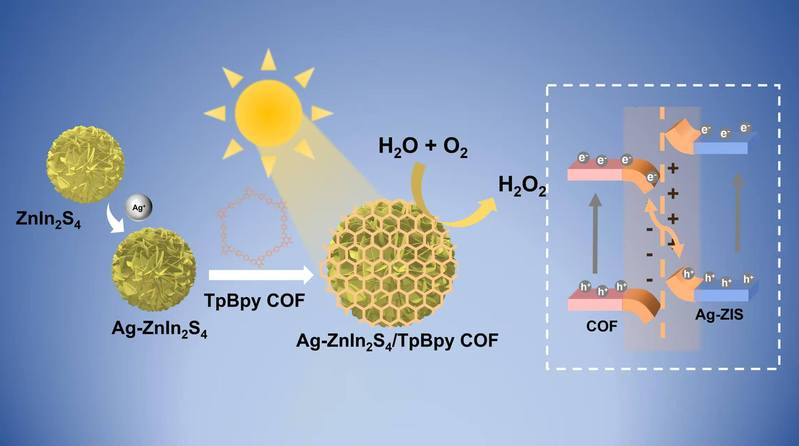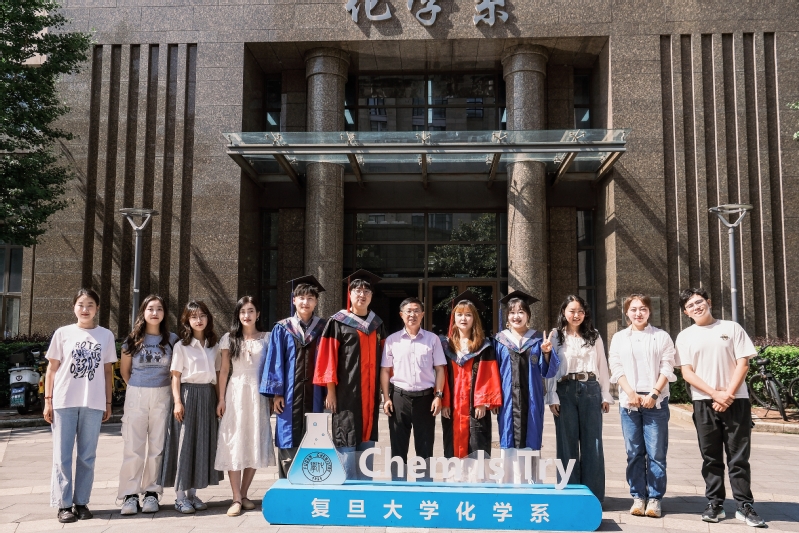Photocatalytic water splitting for hydrogen production is a sustainable and environmentally friendly technology. However, the rapid recombination of photo-induced electrons and holes results in low hydrogen production activity of photocatalysts. Constructing low-cost and high-efficiency heterojunctions is an imperative strategy to address the current challenges in photocatalytic hydrogen production. This study presents a novel binary heterojunction photocatalyst constructed of ZnIn2S4 nanoflowers and Ni-MOLs nanosheets, which was successfully synthesized via an in-situ hydrothermal method. Furthermore, the ZnIn2S4/Ni-MOLs heterojunction exhibited an excellent visible light absorption performance, which was conducive to hydrogen production under visible light irradiation. Specifically, the optimized ZnIn2S4/Ni-MOLs exhibited a remarkable hydrogen evolution rate of 4.75 mmol⋅g- 1⋅h- 1 under visible light irradiation, which was about 95 times and 8 times higher than that of pure Ni-MOLs and ZnIn2S4, respectively. Additionally, the catalyst exhibited excellent stability in five recycling cycles test, and the apparent quantum efficiency (AQE) of the optimized ZnIn2S4/Ni-MOLs had reached 23.3 %. The formation of the ZnIn2S4/Ni-MOLs heterojunction significantly enhanced photocatalytic activity by promoting efficient charge carrier separation, exposing more active sites and enhancing absorption of visible light. The experimental characterization and density functional theory (DFT) calculations revealed that the synergistic effect within the ZnIn2S4/Ni-MOLs heterojunction significantly facilitated the directional transfer of electrons from ZnIn2S4 to Ni-MOLs, achieving efficient charge carrier separation. This study not only synthesized an efficient photocatalyst for hydrogen production under visible light but also provided a novel strategy for constructing effective and stable ZnIn2S4-based or MOLs-based heterojunction photocatalysts.

文章链接:https://doi.org/10.1016/j.apcatb.2024.124657
附件:![]() 10.1016j.apcatb.2024.124657.pdf
10.1016j.apcatb.2024.124657.pdf
 Wei-Lin Dai Group
Wei-Lin Dai Group



